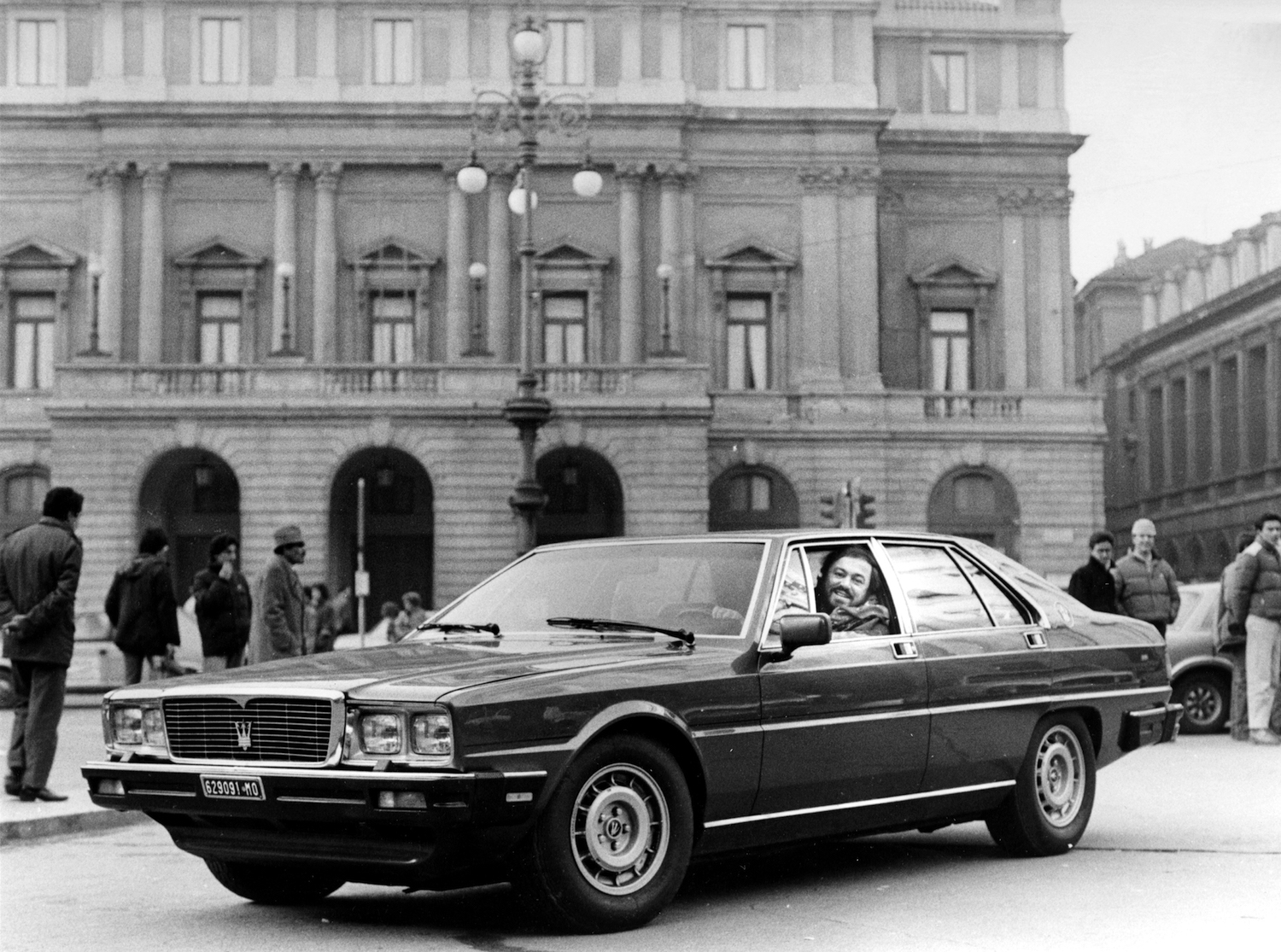The Maserati Quattroporte is peak ’80s luxury, Giugiaro-style
The story of what we know as the Maserati Quattroporte III began with then Maserati-owner Citroën being both too cool and way too innovative for a world entering the recession period in the mid-1970s. The path out of bankruptcy led to Maserati seeking refuge under Peugeot’s umbrella, whose bosses demanded loss-making Maserati to be folded straight away. Looking at some 800 jobs at immediate risk in Modena, the Italian government stepped in, purchasing Maserati with the help of Alejandro de Tomaso. Modena’s often-mocked immigrant didn’t get a majority in the brand, but bought just enough of its stock to become its chairman.
The first De Tomaso-era Maserati was the Kyalami grand tourer, which was developed from the De Tomaso Longchamp, with a new Frua body and Maserati’s V-8. Then came the equally V-8-powered Quattroporte III, which was basically a De Tomaso Deauville re-bodied by Giorgetto Giugiaro, first shown in 1976 and entering production in 1979. Proving de Tomaso’s vision throughout the 1980s, this sedan became the default choice for high-profile industrialists in Italy and beyond.
20191216170152)
20191216170001)
20191216170318)
20191216165951)
Giugiaro’s Quattroporte was boxier and thus a lot more formal than the first two generations, yet it also maintained the brand’s sporty image by packing a 4.2-liter V-8 with 255 horsepower, which later became a 4.9-liter motor with 280 hp, allowing for a top speed of 137 mph.
In 1982, just three years after it hit the streets, the Italian president’s General Secretariat placed an order with Maserati for the construction of an armored Quattroporte for the president’s use. Sendro Pertini’s Quattroporte came in the shade “Dark Aquamarine,” with a beige velvet interior and a large ashtray with a pipe holder between the rear seats, requested by the President himself.
The state limousine also featured a bar cabinet, a telephone system, and an intercom. More importantly, the cabin was completely armored with high-strength manganese steel plating, as well as 31mm-thick polycarbonate power windows. As you’d expect, the roof could also be opened above the rear seats, allowing the President to stand up and greet his people. But one man just wouldn’t greet him next to his Maserati:
“The Head of State used the Quattroporte third-generation on all public occasions, including his historic visit to the Ferrari factory in Maranello on 29 May 1983. On that occasion, ceremonial etiquette demanded that once the car had entered the plant, the host, Enzo Ferrari should approach the presidential vehicle. However, Ferrari remained motionless about 30 feet from the car. The elderly President Pertini got out of the Quattroporte and walked over to the Ferrari boss.”
Prancing Horses ran into trouble with Tridents before.

While Maserati four-doors have always been popular with state officials, their popularity with artists wasn’t far behind. Modenese tenor Luciano Pavarotti is one of the most famous former Quattroporte drivers, who was once photographed enjoying his luxury car outside La Scala in Milan.
In 1986, likely to keep up with the Germans, Maserati launched the “Royale” version of the Quattroporte, which featured softer leather seats and all the walnut veneer a V-8 could carry. For this model, the 4.9-liter was tuned to 300 horsepower, which promised 143 miles per hour.
Between 1979–1990, Maserati built 2145 Quattroportes, of which only 51 were Royales. Today, this one resides at a cheese farm as part of the Panini family’s collection:


The Italian president rides in a Quattroporte to this day, propelled by a twin-turbo V-8 producing 530 horsepower and 479 lb-ft of torque in 2019. Its color is known as “Blu Istituzionale,” and this sixth-generation model is probably a whole lot safer than the 1983 edition was.
20191216170100)
We’re only scratching the surface here, but the fact remains that Alejandro de Tomaso (and the government) saved Maserati, keeping the flame alive with cars like the Quattroporte and its two-door V-6 sibling, the mighty Biturbo. Fiat took over in 1993, and today, Maserati is looking ahead with higher ambitions than in many years. This is their latest mid-engined prototype, and once this new Maserati supercar hits production, we’d appreciate a photo of it parked next to a mint Quattroporte III Royale. Worlds apart, yet very much connected.
20191216170016)

